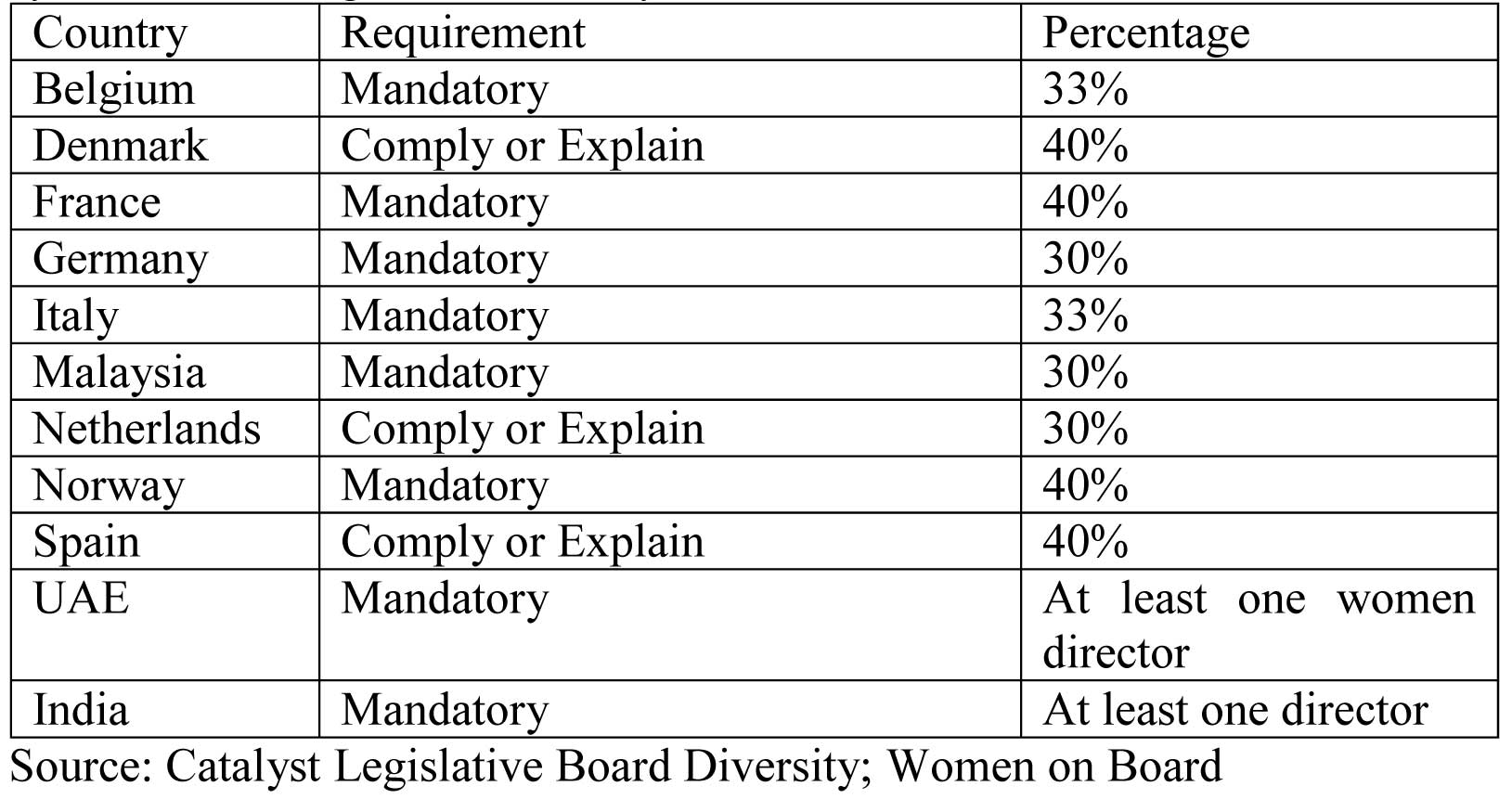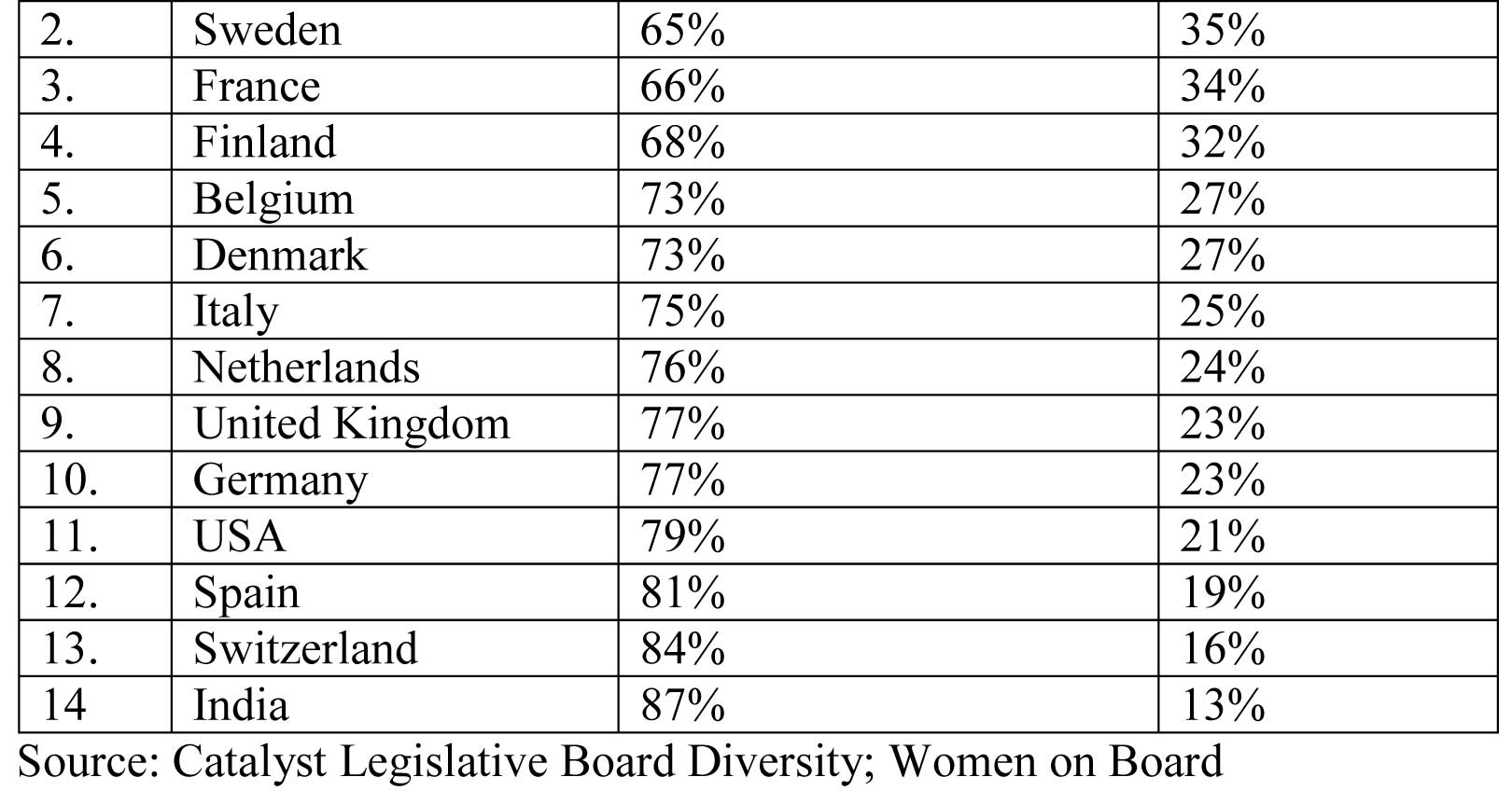Subscribe now to get notified about IU Jharkhand journal updates!
Women Directors :Initiatives towards gender neutrality in Indian Companies
Abstract :
Indian Society is a male dominated society. Status of women in our society has kept fluctuating from the ancient time. Her status has witnessed both the period of subjugation and liberation. Social status of women in the society has degraded her status in the corporate sector as well. Presence of strong business acumen along with inborn ability of acting as a nurturer makes her presence necessary in boardroom. Capacity of forming widely skilled creative teams along with dedication towards the work makes her presence in corporate boards justified. Presence of women brings great social sensitivity and deters impulsive risk oriented decision making. India being leading country in the world to have the head of state as female, our boardrooms is still lagging behind in having sufficient representation of women. Although article 16 of the constitution of India guarantees equal opportunity of employment to all its citizens but a lot needs to be done in the corporate sector especially for boardroom gender neutrality. In India several legislations have been enacted by the Government for restoring the status of women. Companies Act, 2013 by its second proviso ( noun, meaning – a condition or qualification attached to an agreement or statement ) to section 149(1) makes a humble attempt towards gender neutrality along with the Securities and Exchange Board of India through its Regulation 17(1) of SEBI (Listing Obligations and Disclosure Requirements) Regulation, 2015. The present paper focuses on the need of gender neutrality in Indian Boardroom.
Keywords :
Gender Neutrality, Business Acumen, Companies Act, BoardroomsIntroduction:-
Male and female both are indispensible part of our society. A nation can progress in real sense only when its whole population comprising of both male and female have pari pasu (Latin phrase meaning on an equal footage) representation in all sectors of economy.
Corporate sector being backbone of economy must have representation of both male and female. Statics of women representation in Indian boardroom is not impressive. However it has increased with the passing time but still the figures are not satisfactory. Women have been effective managers, managing the family and society since time immemorial, the similar representation needs to be reflected in the board rooms as well. God has blessed women with several unique features which they can use for the betterment of corporate sector, country and economy as a whole. At present they are educated, professionally qualified, and fully conversant with modern decision making techniques; have strong business acumen as well. It’s high time now that the doors of Indian corporate should be opened willingly for the women and they should be welcomed whole heartedly.
2. Presence of women in Indian Board Rooms; Provision verses reality
Gender neutrality, in boardrooms where there is no discrimination on the basis of gender remains a hotly debated topic. Supporters of gender neutrality very strongly advocate presence of women. Academic studies around the world have linked gender neutrality with improved financial Performance. In India women representation has improved but remains abysmal low nearly less than 5 %. Big companies on which the provision of The Companies Act, 2013 has been made applicable have appointed women director but in most of the other companies women representation is negligible. In most of cases their presence is only for the sake of being present because their representation is only limited to representation on paper and not in reality.
3. Statutory provision regarding board composition in India
Presently, Indian Companies are following section 149 of the Companies Act, 2013 for its structure of Board Room.
As per this structure, every company needs to appoint an individual as director and the number of directorship is decided according to its type-
- For Public Company- Three director
- For Private Company- Two director
- For One Person Company- One director
Each company may have maximum 15 directors. After passing special resolution, a company may have more than 15 directors.
Companies Act, 2013 has provided the provision for appointment of at least one woman director for following class of companies:
- Listed company
- Public Company having
- Paid up share capital of one hundred cr. Rupees or more
Or,
- Turnover of three hundred cr. Rupees or more as last audited financial statement
4. Statutory Provision regarding Women Directors in India Companies Act, 2013
Provision of Women Director in Companies Act, 2013
As per section 149 of the Companies Act, 2013
-
Every company shall have a Board of Directors consisting of individuals as directors and shall have-
- a minimum number of three directors in the case of a public company, two directors in the case of a private company, and one director in the case of a One Person Company; and
- a maximum of fifteen directors: Provided that a company may appoint more than fifteen directors after passing a special resolution:
Provided further that such class or classes of companies as may be prescribed shall have at least one woman director.
Companies (Appointment and Qualification of Directors) Rules 2014
3. Woman director on the Board. - The following class of companies shall appoint at least one woman director-
- every listed company;
- every other public company having -
- paid–up share capital of one hundred crore rupees or more; or
- turnover of three hundred crore rupees or more:
Provided that a company, which has been incorporated under the Act and is covered under provisions of second proviso to sub-section (1) of section 149 shall comply with such provisions within a period of six months from the date of its incorporation:
Provided further that any intermittent vacancy of a woman director shall be filled-up by the Board at the earliest but not later than immediate next Board meeting or three months from the date of such vacancy whichever is later.
Explanation.- For the purpose of this rule, it is hereby clarified that the paid up share capital or turnover, as the case may be, as on the last date of latest audited financial statements shall be taken into account.
Regulation 17(1) of SEBI (LODR) regulation, 2015
As per SEBI (LODR) Regulation composition of board of directors of all listed companies shall be as follows:-
Board of directors shall have an optimum combination of executive and non- executive directors with at least one women director and not less than fifty percent of board of directors shall comprise of non- executive directors.
5. Women representation in boardroom; India vis a vis other countries
Regulatory quotas have played impressive role in promoting gender neutrality. European markets have acted as pioneer in this field. Norway has set benchmark by passing a regulation requiring at least 40% of board members to be women. In India Companies Act, 1956 was repealed enacting new Companies Act, 2013 which contained mandatory provision regarding appointment of at least one women director in the specified companies.
Regulatory thresholds for gender neutrality in boardroom

Gender based board data of countries


As compared to European nations Indian boards are less gender neutral. Although the statutory provision regarding the women director has increased this percentage from abysmal low of 5 % but a lot improvement is required.
6. Fortune 500 companies of India; gender neutrality

7. Rationale and Need for gender neutrality
8. Benefits of Gender Neutrality in Board Room
Gender neutrality in Board may change the present condition of our corporate world. Women are gifted with the skill and capability to manage and arrange the activities properly. They have capacity to balance various responsibilities at once. Hence with women participation a company may get benefitted in following ways:-
- Collective Intelligence, innovation and creativity can be improved by women inclusion.
- As an executive, women can build better inter-business relationship.
- Women can make healthy and co-operative work environment within the organisation.
- Women have more effective Risk Management skill in comparison to men.
- Since maximum purchases are influenced by women population, a woman can only align with the requirements and needs of another woman.
- Women inclusion enhances the financial performance of the company.
- Women have better grievance redressal capacity.
- In decision making, female are considered as more efficient corporate executive.
9. Conclusion and suggestions
Present era is the era of equality and good governance. Gender neutral board not only brings financial efficiency and efficacy but also promotes good corporate culture. Women have proved themselves time and again and it is the need of hour to increase their presence in board room. Humble attempt of Companies Act, 2013 should be praised but at the same time compliance of law in letter and spirit is required. No regulation made by the government can lead to sustainable growth of the economy until people understand its importance and willingly adopt them. Effort of Companies Act, 2013 is commendable but the outcome says that a long journey needs to be covered as the purpose of gender neutrality cannot be achieved by making it applicable on specified companies only. As considerable time has elapsed since the enactment and enforcement of the Companies Act, 2013 now the reach of the provision needs to be enlarged so that more companies get covered by this provision leading to enhanced gender neutrality.
References:
- Adams, B. Reene & Ferreira D (2009) Women in boardroom and their impact on Governance and performance, 94: Journal of financial economics.
- Companies bare Act, 2013
- http://perry4law.org/clii/wp-content/uploads/2014/03/Companies-Appointment-and-Qualification-of-Directors-Rules-2014.pdf
- http://www.mca.gov.in/Ministry/pdf/CompaniesAct2013.pdf
- https://www.india.gov.in/sites/upload_files/npi/files/coi_part_full.pdf
- http://www.primedatabasegroup.com/primegroup_logo/Women%20Directors%20In%20India.pdf
- https://www.iocl.com/aboutus/Management.aspx
- http://www.ril.com/OurCompany/Leadership/BoardOfDirectors.aspx
- https://www.tatamotors.com/about-us/leadership/
- https://www.bharatpetroleum.com/about-bpcl/board-of-directors.aspx
- http://www.hindustanpetroleum.com/boardofdirectors
- https://www.coalindia.in/hi-in
- https://www.icsi.edu/media/webmodules/publications/FinalCLStudy.pdf
- https://www.sebi.gov.in/sebi_data/attachdocs/1441284401427.pdf
- Ruchita Dang & Nishant Sharma (2015) Women directors: Amove towards women empowerment in corporate world, Volume 2, issue 3, International journal of research in humanities & social sciences.
- Syed Femina (2017) Do women directors have strong business acumen? - A highly resourceful role in the board room, Volume 2, issue 19 edn., : International Journal of Business and Administrative Research Review. Chandrashekhar S . & Muralidharan K. (2010) Women Power in Corporate India , Paper no. 324, December, IIM Bangalore. Mobasseri S. & McElhaney A. Kellie (2012) A Women create a sustainable future, October , Hass School of Business Berkeley. Bhavani Balasubramanian (2014) Getting women on board The Hindu, March 17,2014, The hindu, Business line . Neilson, Sabina and Huse, Morten (2010) The contribution of women on board of directors: going beyond the surface, corporate governance, An international review 18(2) 136-148.
